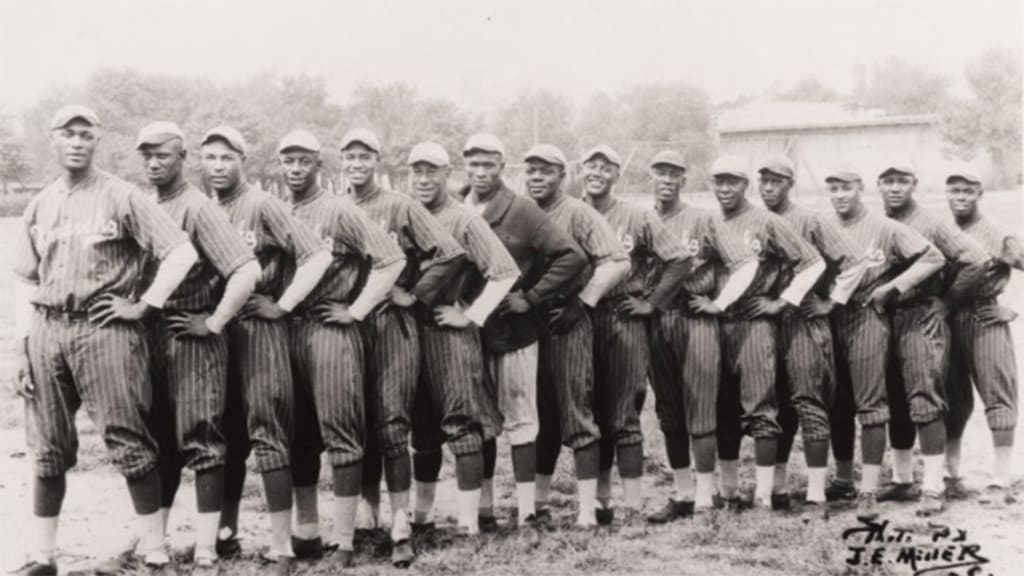
MLB.com is celebrating Hispanic Heritage Month by highlighting stories that pay tribute to some of the most significant and talented players from Latin America in the game's history.
---
The year 1908 was a year of great political importance in Cuba. The second U.S. occupation was beginning to wind down, with the election of José Miguel Gómez in November of that year, which led to the ultimate withdrawal of American troops from the island nation in February 1909.
But peacekeeping troops were not the only units of American influence in Cuba at the time. Major League teams were steadily visiting the island to take on stars from the Cuban League, bringing diplomacy to the diamond.
It is against this backdrop that José Méndez made his loud entrance into baseball history.
A right-hander who stood around 5-foot-10, Méndez was a shorter build than the average Major League pitcher today. In his arsenal were a “deceptive fastball” and a “sharp-breaking curveball,” according to his plaque at the Baseball Hall of Fame in Cooperstown, N.Y.
With those tools, Méndez put up astounding numbers in his debut season with the Cuban League’s Almendares Blues. In 13 games (seven starts), he pitched 75 innings and allowed only four earned runs for a 0.48 ERA, according to Seamheads.com -- good for an eye-popping 590 ERA+. The Blues gave Méndez the ball more often the next season, when he led the league in innings (235), ERA (0.80), ERA+ (290) and strikeouts (157, 75 more than the next closest pitcher).
His first taste of a Major League team came against the Cincinnati Reds, who visited Cuba in late 1908. Defeating a Major League team would not only be a sign of how strong Cuban baseball had become since the sport arrived in the mid-19th century; it would also serve as a mark of pride for the Cuban population.
Méndez was up to the challenge. He faced the Reds three times from November to December of that year with a common thread connecting the performances:
Nov. 13: 9 IP, 0 R
Nov. 29: 7 IP, 0 R
Dec. 3: 9 IP, 0 R
That dominant stretch was just one in a trend of great pitching by Méndez against Major Leaguers. The legend of El Diamante Negro, or the Black Diamond, rose with each outing against the visiting Major League teams, whom he faced 24 times between 1908-1913.
Méndez drew praise from big leaguers, including Philadelphia Athletics catcher Ira Thomas, who told Baseball Magazine, “It is not alone my opinion but the opinion of many others who have seen Méndez pitch that he ranks with the best in the game. I do not think he is [Hall of Famer] Walter Johnson’s equal, but he is not far behind.” On Jan. 12, 1914, the Philadelphia Inquirer titled a report of baseball on the island with a nickname Méndez had been given: “Cuba’s Black Mathewson.” In the story, Christy Mathewson, whom Méndez faced three times and defeated once, called the Cuban ace “a great pitcher.” Phillies manager Hans Lobert dubbed him “a wonder.”
However, Méndez would not pitch against a Major League team after 1913, and he’d have to entirely reinvent who he was as a player. Arm injuries began to affect him in '14; for the next nine years, he failed to make more than five starts in a single season. Méndez turned to another premium position -- shortstop -- but the magic wasn’t quite the same there. Stateside stints came with the barnstorming All Nations team, the Chicago American Giants and the Detroit Stars, though to mixed results.
But in 1920, Méndez would move to Kansas City and make his mark on Negro Leagues history.
The Negro National League had just been started that year, and Méndez signed with the team as a player-manager, a common position for a team to have at the time. Under his watch, the Monarchs never had a losing season, and they found their peak under Méndez as the right-hander began to regain some health in his pitching arm.
After spending his first three seasons in the middle infield, Méndez returned to the mound in 1923 to throw 138 2/3 innings -- his most in 12 years -- and lead the Monarchs to the first of three consecutive Negro National League pennants.
The third pennant sent Méndez and the Monarchs to the inaugural Colored World Series in 1924, which would become the moment of legend for the Cuban expat in the foundational years for the Negro Leagues. The nine-game series between the West champion Kansas City and the East champion Hilldale went the distance, going to 10 games after Game 3 was called as a 3-3 tie due to darkness.
In the first nine contests, Méndez, who had reportedly been dealing with arm issues, managed to accumulate 10 innings of relief, including a win on the mound in Game 7. With the championship on the line, and despite a doctor’s warning, Méndez started in Game 10. He matched Hilldale starter Scrip Lee zero for zero through seven innings, and Lee blinked first, allowing five runs in the eighth. Méndez closed out a three-hit shutout and brought the first title home to Kansas City.
Méndez would continue playing for the Monarchs until 1926, after which he left associated baseball. But in his absence, he left a legacy built on winning big games, laying foundations of success.
Like so many of the great Negro Leagues players in the early 1900s, Méndez could well have had an exceptional Major League career if not for the grip of racism in America. As Mathewson lamented, “It’s too bad he is a negro, as his color bars him from the big leagues up in the states. If he was a white man or an Indian, he’d be the star of the leagues up there in no time.” That sentiment is well supported by the results: Méndez recorded a 1.85 ERA against Major League teams, nearly a full point lower than his Negro Leagues results (2.73).
Méndez never got his shot to play in the Majors, but in 2006, he was inducted into the National Baseball Hall of Fame as “the first Cuban-born star in the pre-Negro Leagues era.” He remains a foundational player in the now-long lineage of Cuban players making their mark in MLB.
